In classical architecture, the term ‘arcade’ refers to a series of arches supported by columns or other vertical elements such as piers. First developed by the Romans, who took inspiration from ancient aqueduct designs, arcades today are used to form a passageway between arches and a solid wall, or a covered walkway providing access to commercial buildings or markets.
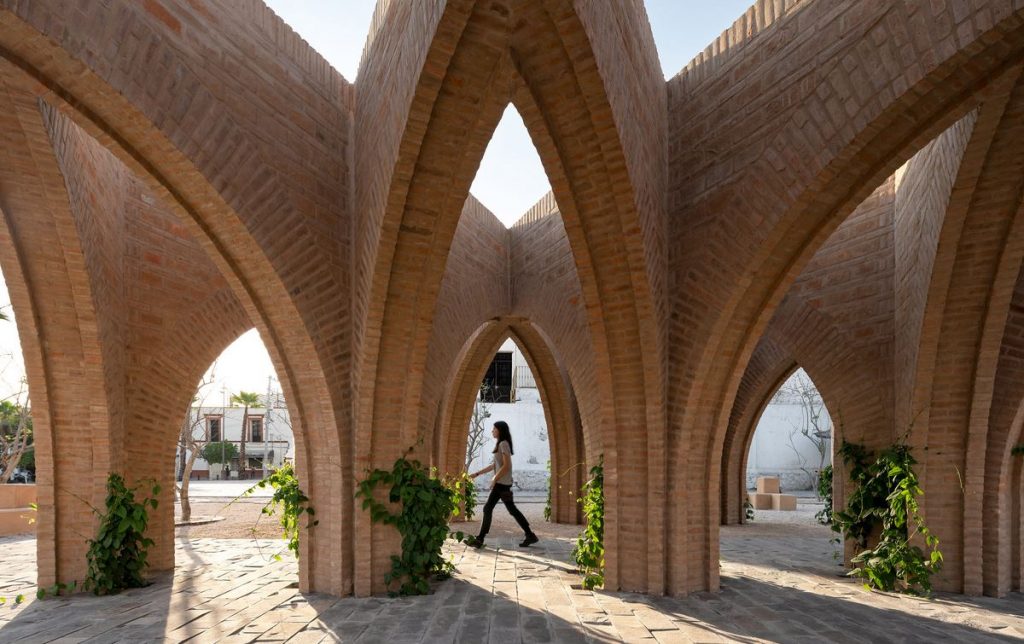
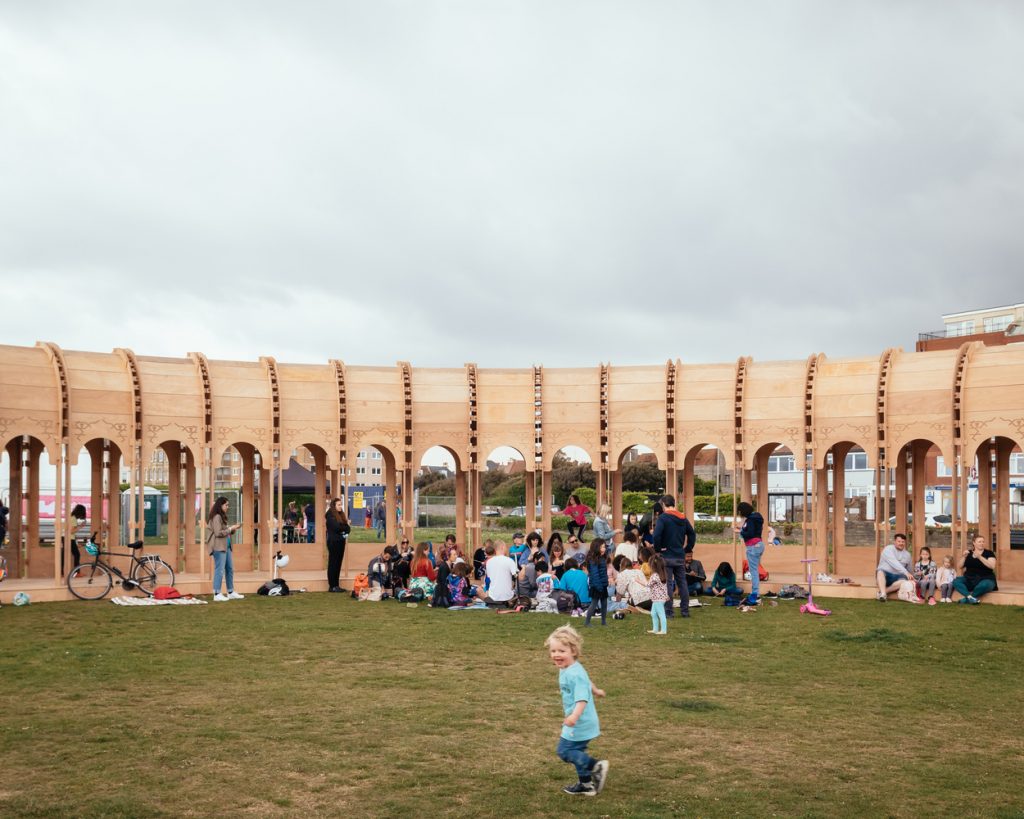
The Riwaq by Marwa Al-Sabouni and Ghassan Jansi
For this year’s Brighton Festival, England’s largest annual multi-arts festival, Syrian architects Marwa Al-Sabouni and Ghassan Jansiz have built The Riwaq a temporary pavilion developed in the shape of the traditional arcade specific to Islamic architecture and garden design.
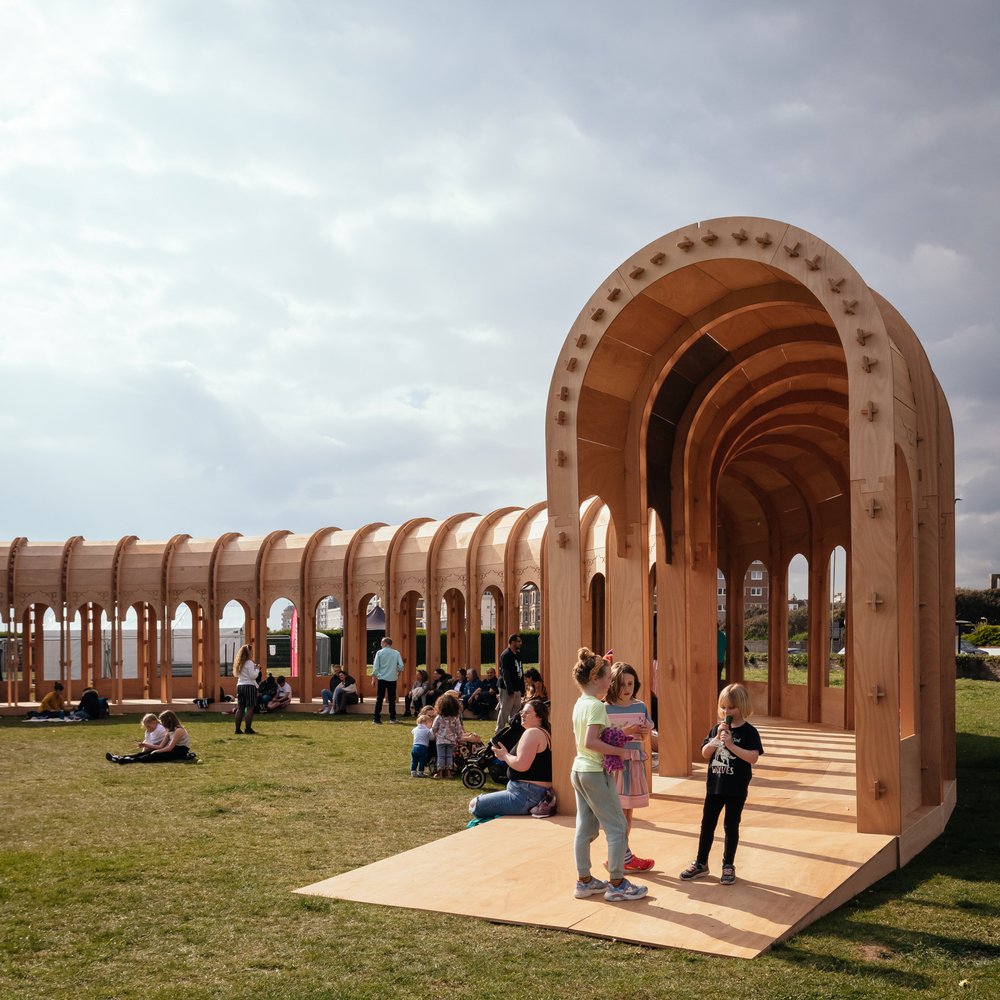
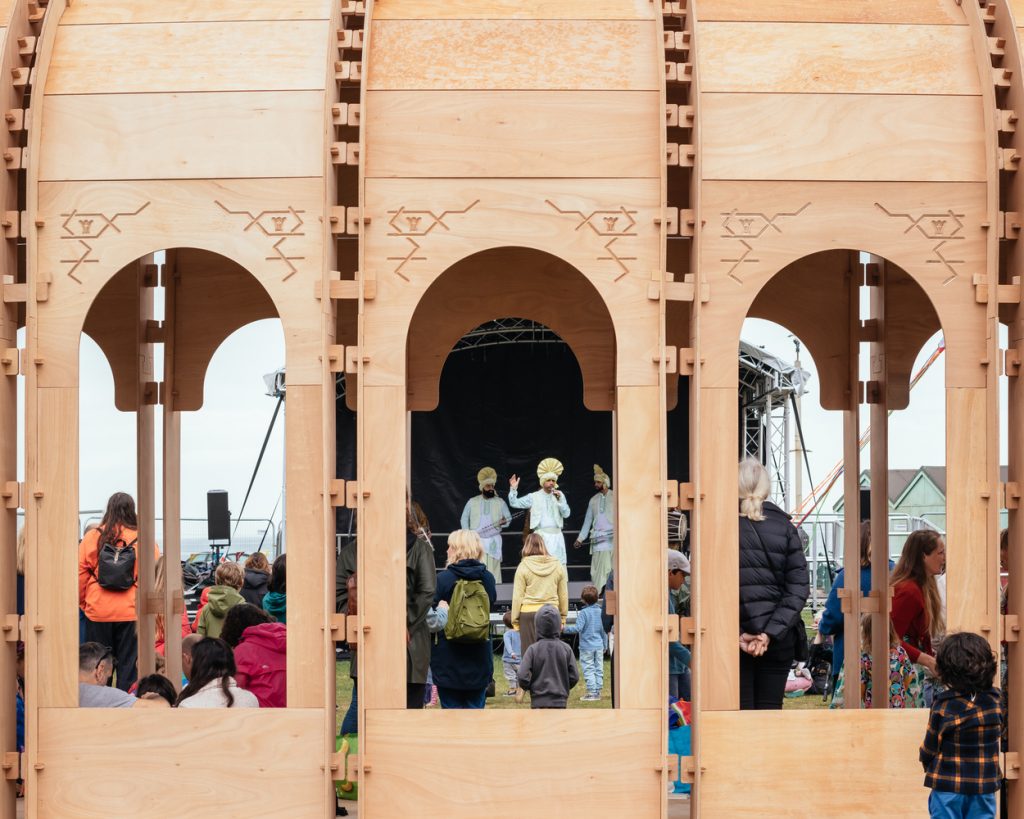
The Riwaq by Marwa Al-Sabouni and Ghassan Jansiz
Open on at least one side, the historic riwaq arcades employed by many mosques and madrasas, including the Great Mosque of Algiers and the Bazaar of Kashan in Iran, often serve as a transitional space between interior and exterior spaces, providing shade or shelter from the rain.
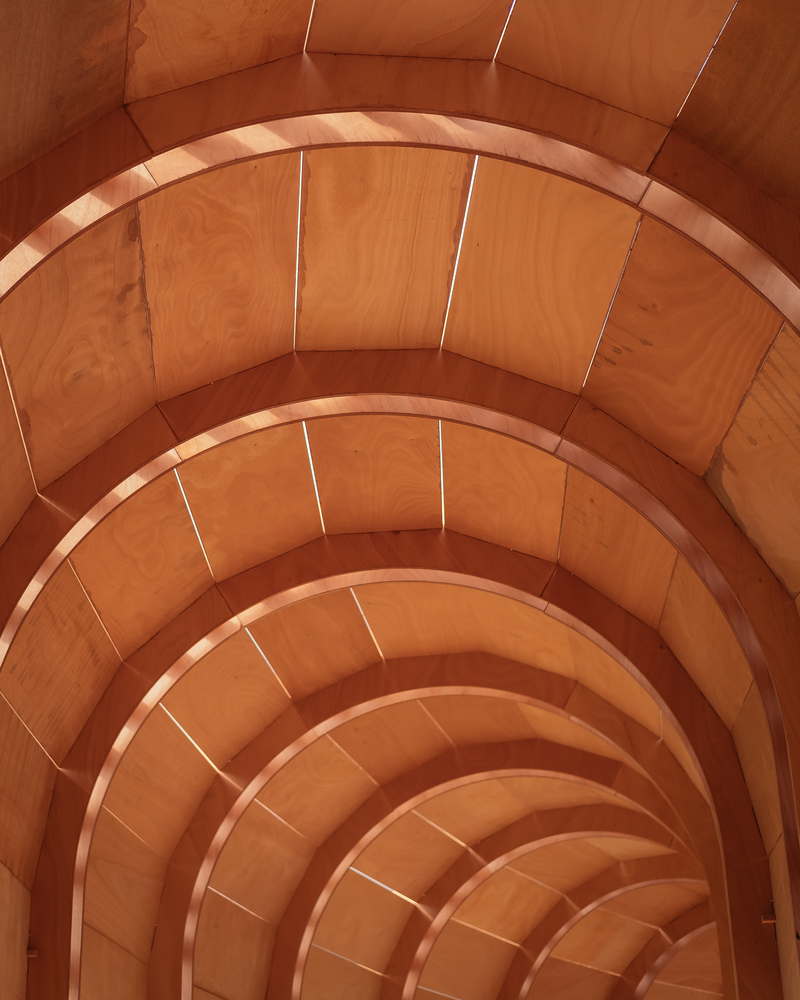
The Riwaq by Marwa Al-Sabouni and Ghassan Jansiz
The structure designed by the Syrian duo is a horseshoe-shaped structure, another representative shape of Islamic architecture, spanning 30 meters in diameter. It serves as a transitional creative threshold between the surrounding city and the outdoors.
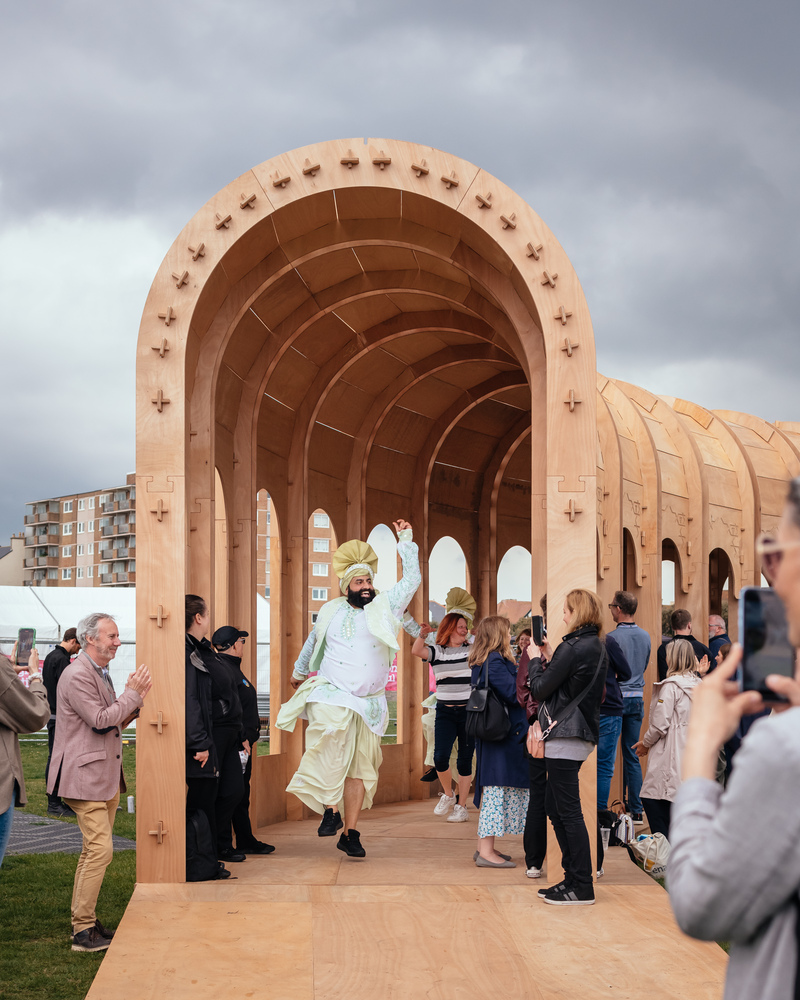
The Riwaq by Marwa Al-Sabouni & Ghassan Jansiz. Copyright Jim Stephenson 2022
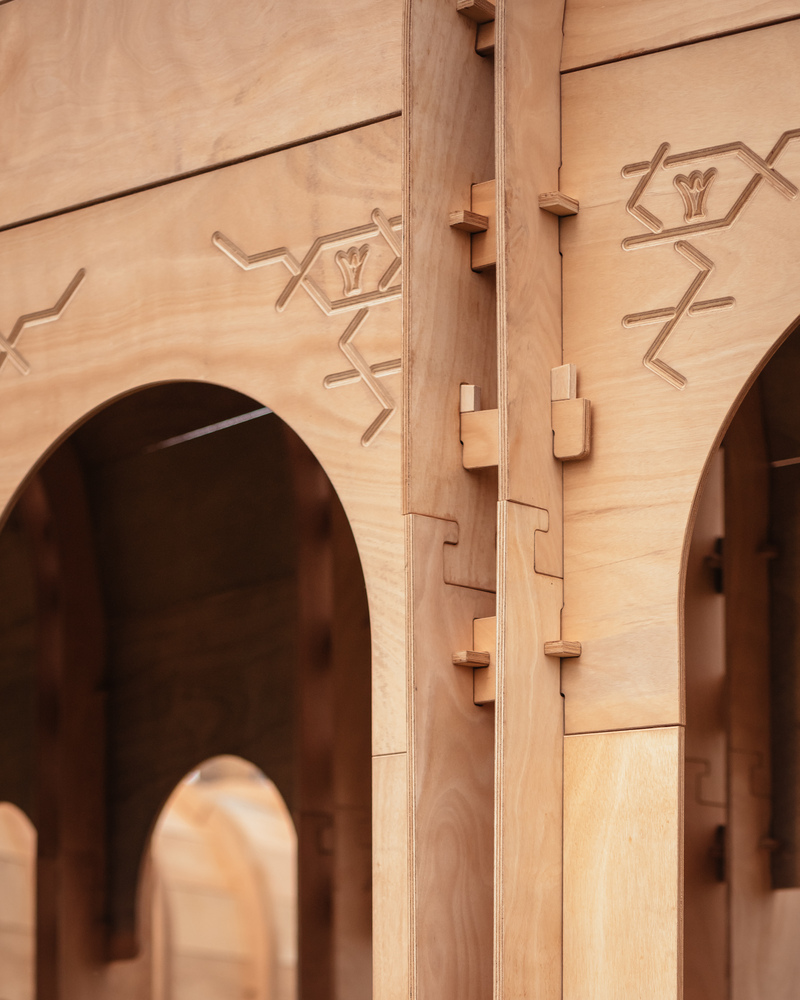
The Riwaq by Marwa Al-Sabouni and Ghassan Jansiz
The pavilion has been developed to house performances and events that take place on its stage and host a wide array of activities under its roof, from Iranian storytelling to screen printing workshops to Bhangra dance sessions.
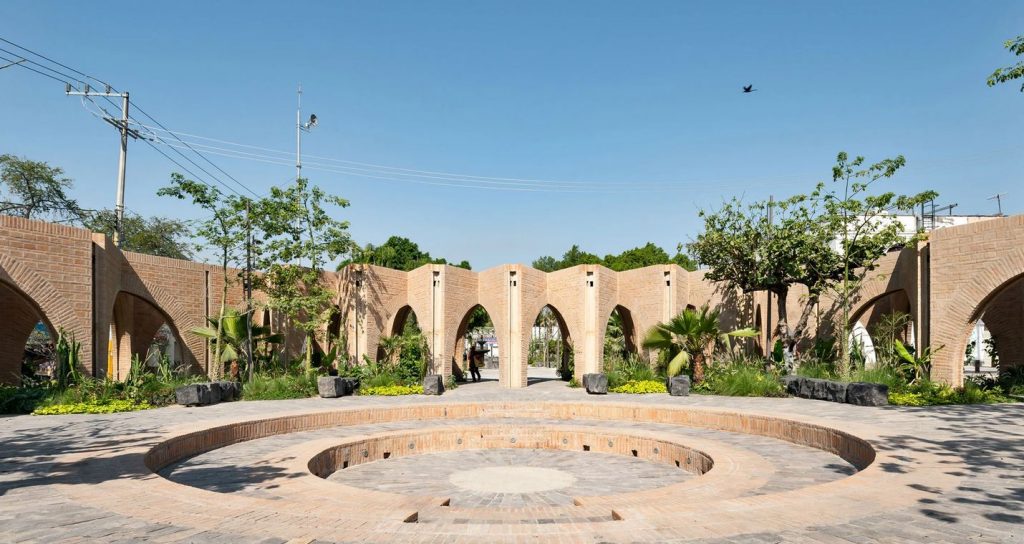
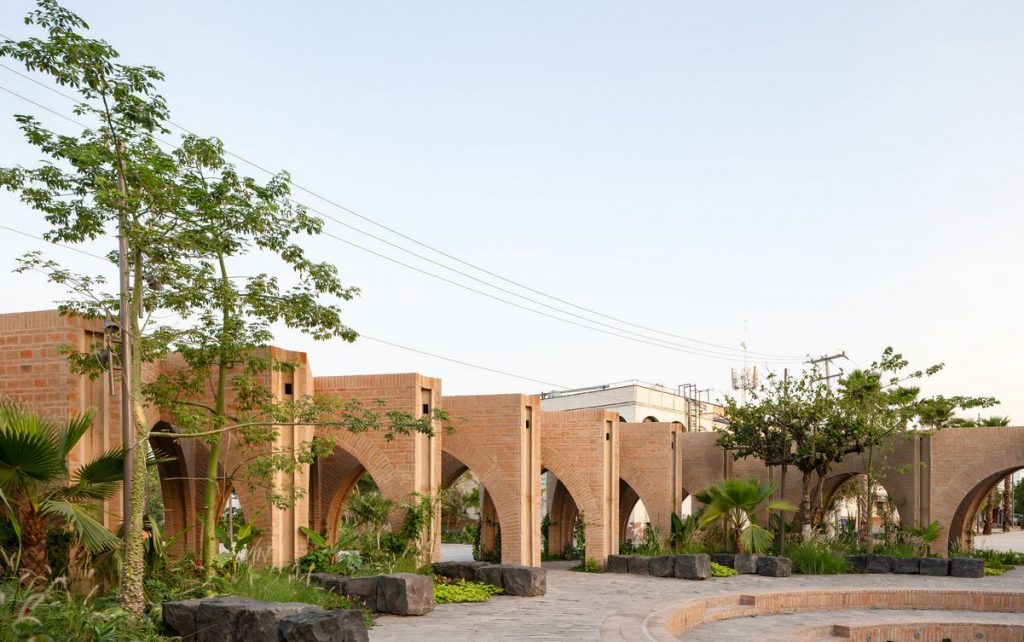
Central Gardens of Jojutla by Estudio MMX (also header image)
Local architecture studio MMX has turned to arcades when redeveloping a public square in Jojutla, Mexico, after it was left devastated following the country’s deadly 2017 earthquake, which caused major destruction across the states of Puebla and Morelos, as well as the Greater Mexico City area, and killed over 350 people.
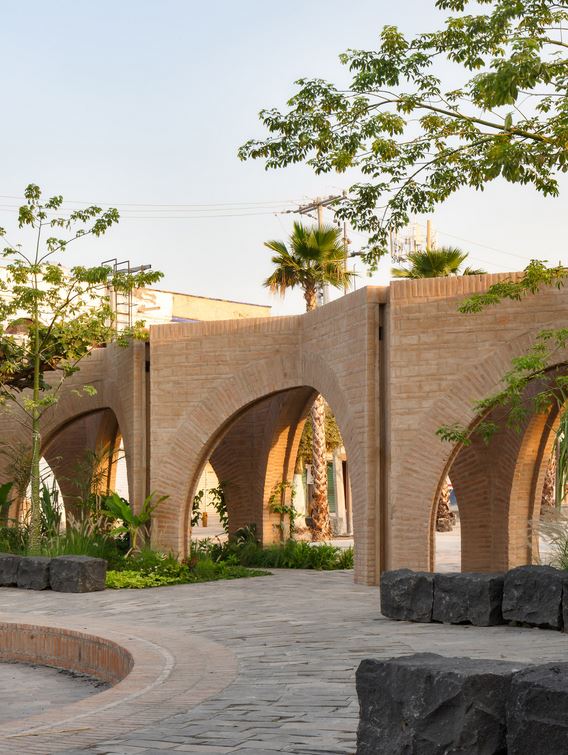
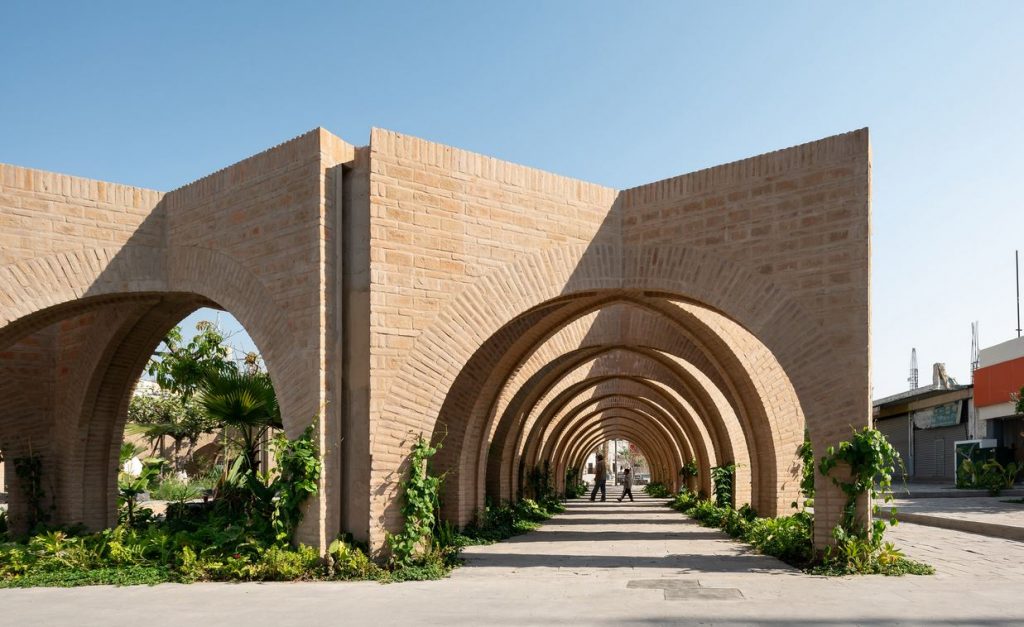
Central Gardens of Jojutla by Estudio MMX
Encircling the central courtyard, which is to be used as social and civic meeting area, are ochre brick archways influenced by the traditional architecture of the region. Arranged in a fan-like pattern, they provide access to Central Gardens of Jojutla, lush garden spaces that showcase an extensive array of local flora species. Trees were a primary influence for the design as they were some of the only remnants left in the area following the earthquake.
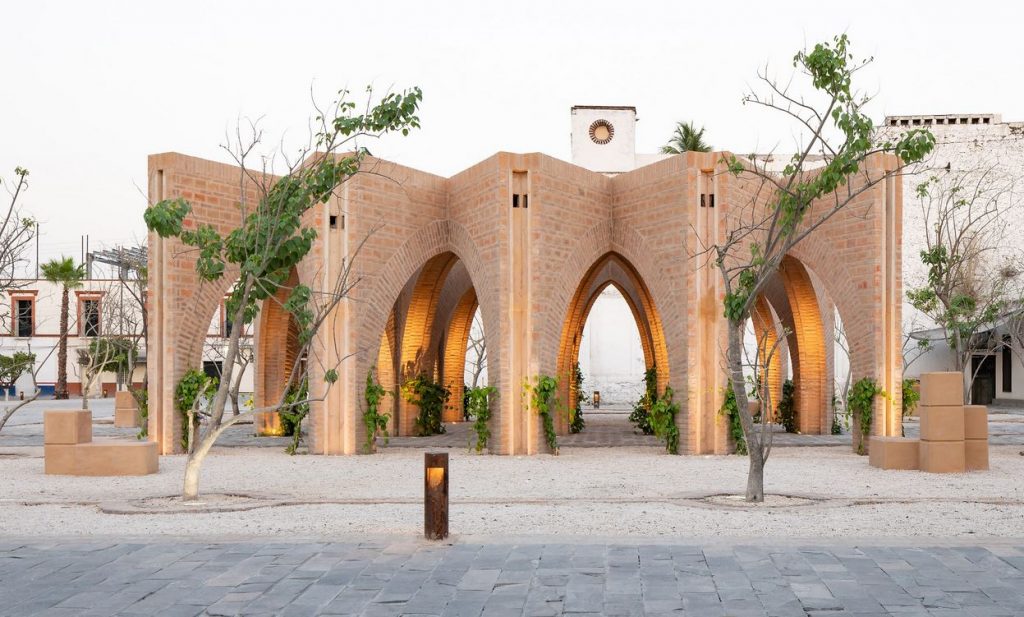
Central Gardens of Jojutla by Estudio MMX
Each of the public square’s newly defined areas has a purpose and relates to the others. These designated spaces include leisure and community meeting points, a civic square and an open-air forum.
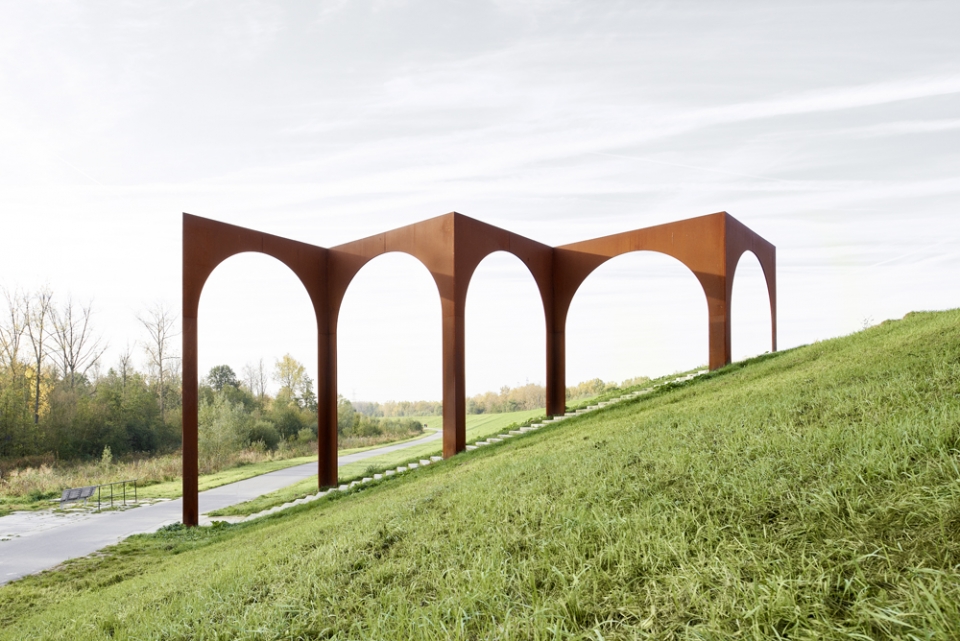
Arcade by Gijs Van Vaerenbergh
Arcade by Belgian architecture duo Gijs Van Vaerenbergh is a permanent work of art outside the city of Antwerp, situated along a historic road, which is abruptly cut by a new flood embankment.
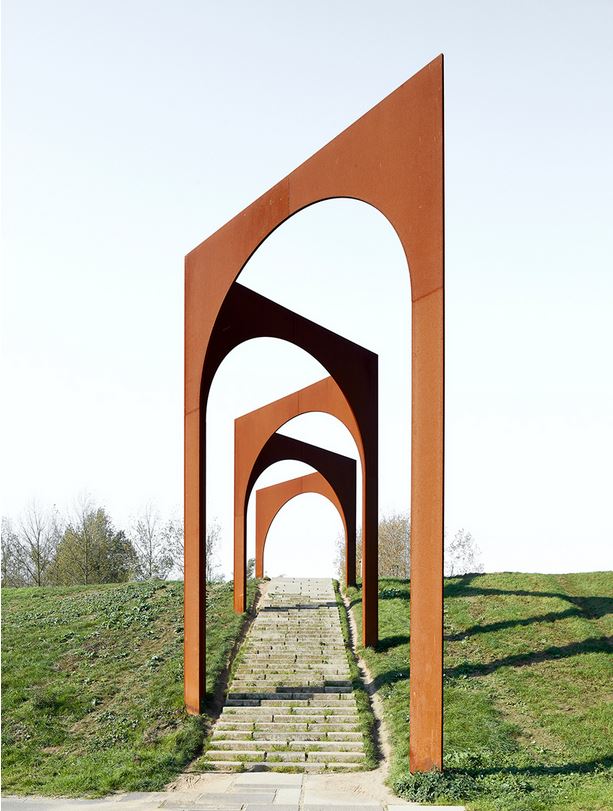
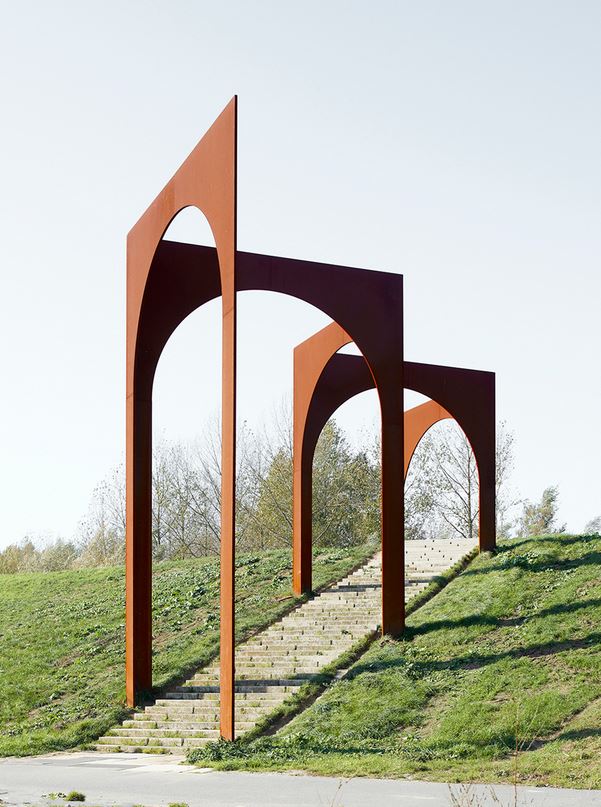
Arcade by Gijs Van Vaerenbergh
While the new dike provides protection against flooding and offers a sweeping view of the landscape, it forms an obstruction that disrupts an age-old link between the village of Basel and the polder, or lowlands. Aiming to symbolically connect one side of the dike with the other, artists Pieterjan Gijs and Arnout Van Vaerenbergh have placed the sculpture in the exact place where the original road turns into the new staircase on the dike.
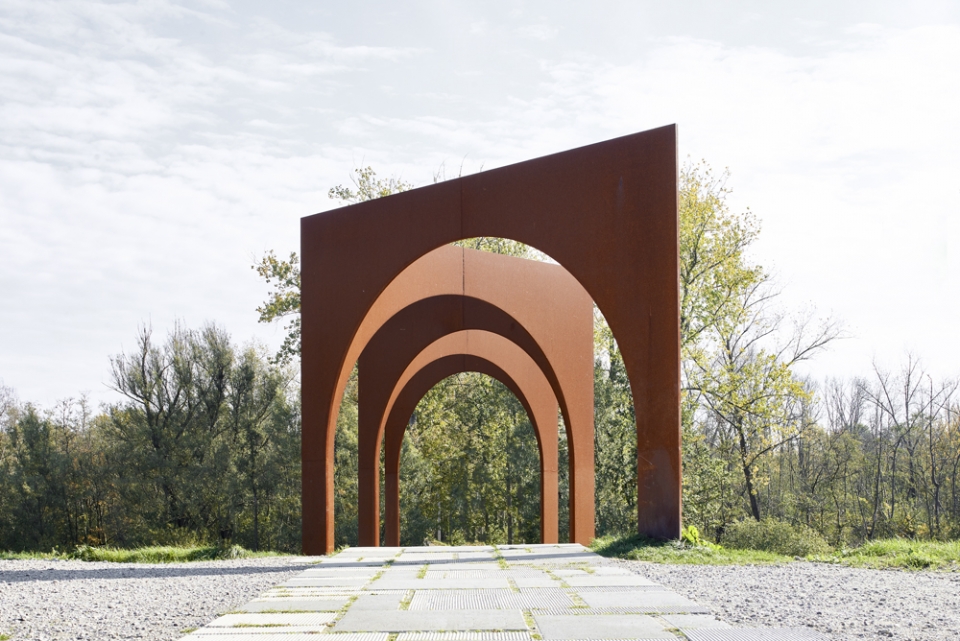
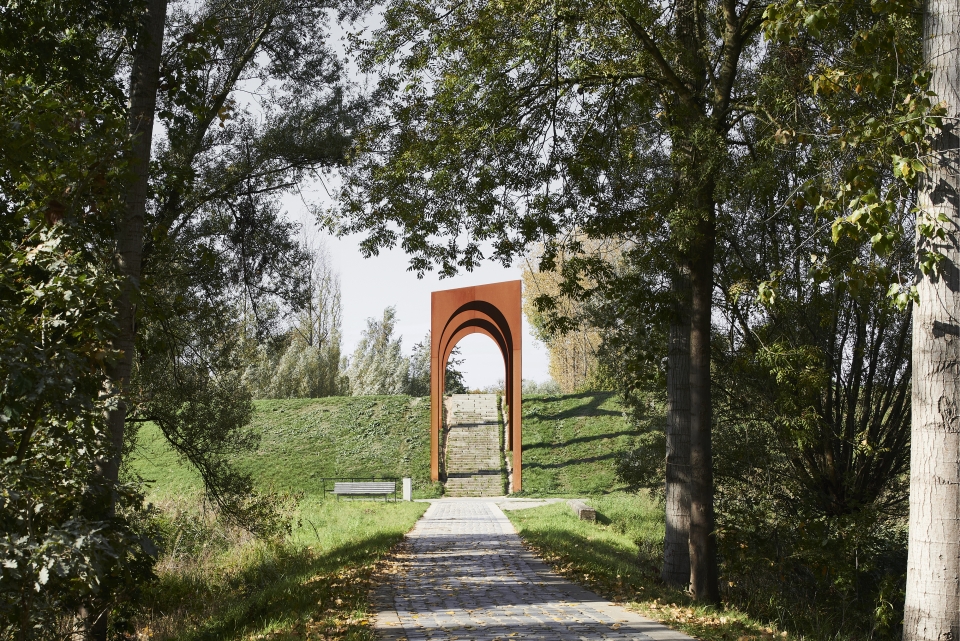
Arcade by Gijs Van Vaerenbergh
The artwork is comprised of five monumental arches, forming a contemporary portico. The arches have been cut out of steel plates, out of which the profiles of classical arches have been subtracted. Together aligned at the same height, the legs of each component become elongated as the work descends the slope. This condition heightens the suggestion of the artwork as an artifact, which existed before the flood dike was built.